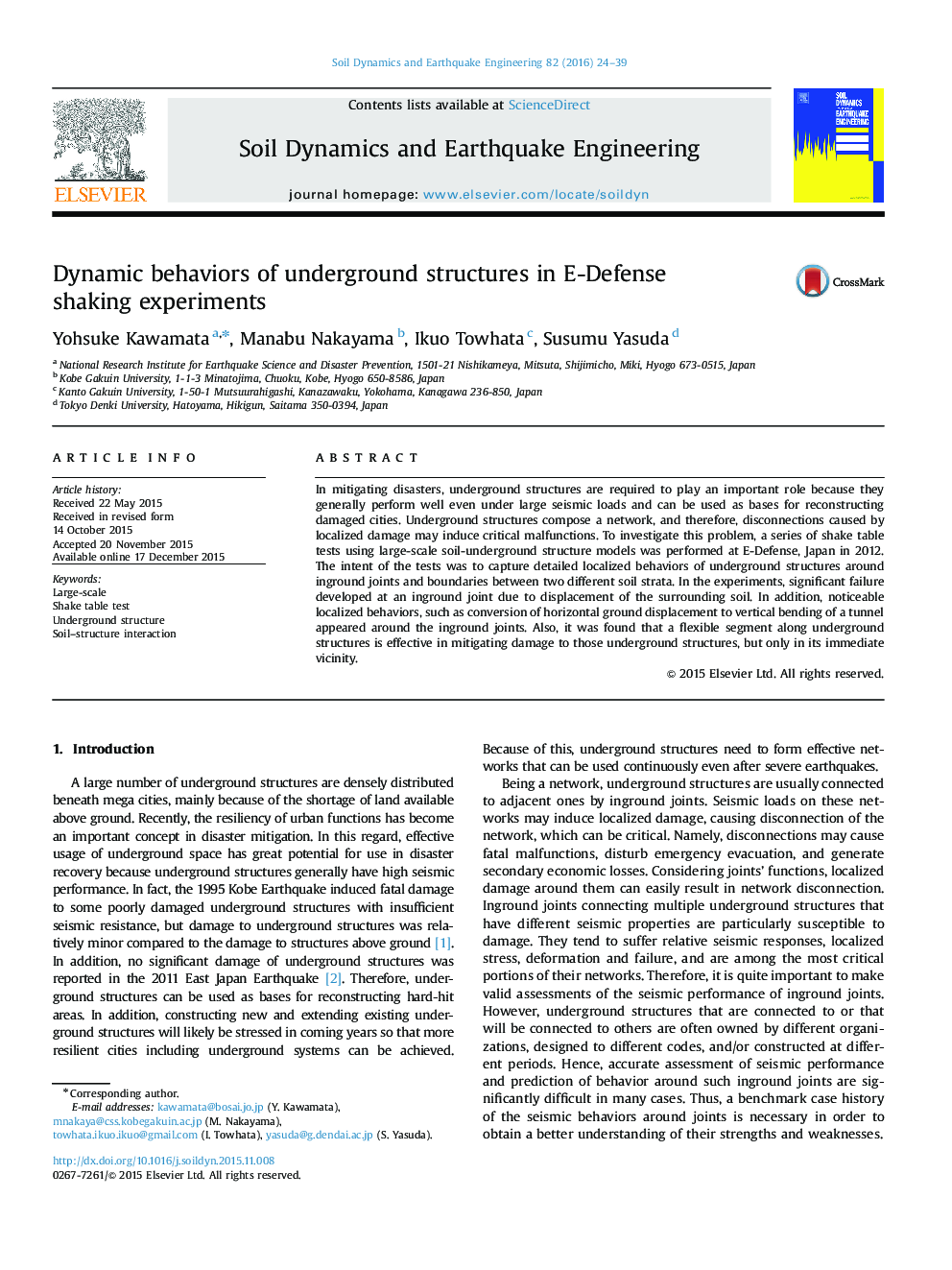| Article ID | Journal | Published Year | Pages | File Type |
|---|---|---|---|---|
| 303921 | Soil Dynamics and Earthquake Engineering | 2016 | 16 Pages |
•We performed shake table tests with large-scale soil-underground structure models.•We examine dynamic interaction between ground and underground structures.•Damages around inground joints are developed by displacements of surrounding soil.•Some noticeable localized behaviors appeared around the inground joints.•Flexible segment along underground structures is effective only in its vicinity.
In mitigating disasters, underground structures are required to play an important role because they generally perform well even under large seismic loads and can be used as bases for reconstructing damaged cities. Underground structures compose a network, and therefore, disconnections caused by localized damage may induce critical malfunctions. To investigate this problem, a series of shake table tests using large-scale soil-underground structure models was performed at E-Defense, Japan in 2012. The intent of the tests was to capture detailed localized behaviors of underground structures around inground joints and boundaries between two different soil strata. In the experiments, significant failure developed at an inground joint due to displacement of the surrounding soil. In addition, noticeable localized behaviors, such as conversion of horizontal ground displacement to vertical bending of a tunnel appeared around the inground joints. Also, it was found that a flexible segment along underground structures is effective in mitigating damage to those underground structures, but only in its immediate vicinity.
